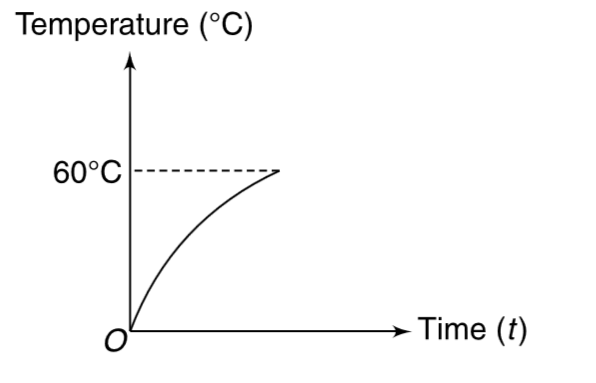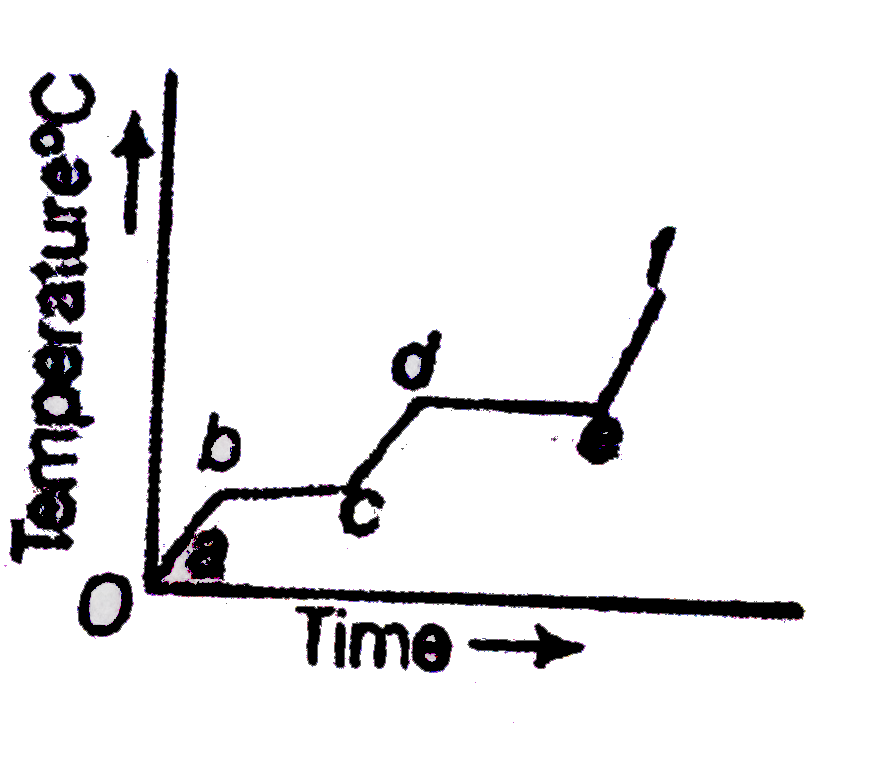(a) Explain why there is no rise in temperature of a substance when it undergoes a change of state although it is still being heated.
(b) Name one property which is shown by naphthalene and not by sodium chloride.
(a) Once the change in state of a substance starts (solid to liquid or liquid to gas), th etemperature of the substance does not change. Actuallym the heat energy now supplied does not increase the kinetic energy of the constituting particles. It is absorbed either as latent heat of fusion or as latent heat of vaporisation.
(b) Napthalene undergoes sublimation upon standing /heating and directly changes into vapours. Sodium chloride (common salt) does not undergo sublimation. It melts on strong heating.
Topper's Solved these Questions
- MATTER IN OUR SURROUNDINGS BOOK - DINESH PUBLICATIONCHAPTER - MATTER IN OUR SURROUNDINGS EXERCISE - Long Answer Questions
10 Videos
- MATTER IN OUR SURROUNDINGS BOOK - DINESH PUBLICATIONCHAPTER - MATTER IN OUR SURROUNDINGS EXERCISE - Higher Order Thinking Skill
4 Videos
- MATTER IN OUR SURROUNDINGS BOOK - DINESH PUBLICATIONCHAPTER - MATTER IN OUR SURROUNDINGS EXERCISE - Very Short Answer Questions
46 Videos
- IS MATTER AROUND US PUREBOOK - DINESH PUBLICATIONCHAPTER - IS MATTER AROUND US PUREEXERCISE - LAQs
10 Videos
- STRUCTURE OF ATOM BOOK - DINESH PUBLICATIONCHAPTER - STRUCTURE OF ATOM EXERCISE - Long Answer Questions
6 Videos
Similar Questions
Knowledge Check
Heat is added to a substance, but its temperature does not rise. Which one of the following statements provides the best explanation for this observation ?
AThe substance must be a gas.BThe substance must be a non-perfect solid.CThe substance undergoes a change of phase.DThe substance has unusual thermal properties.Which of the substances A, B or C has the highest specific heat ? The temperature vs time graph is shown
 AABBCCDAll have equal specific heat
AABBCCDAll have equal specific heat
Why does the heat supplied to a substance during its change of state not cause any rise in its temperature?
View SolutionName one substance which undergoes spontaneous combustion (or burns in air at room temperature).
View SolutionName one common substance which can be easily changed from one state to another by heating or cooling
View SolutionA block is kept in a room which is at 20∘C. To raise the temperature of the block, heat is given to it at a constant rate of 600 watt (using an electric heater). The temperature of the block rises with time as shown in the graph. The slope of the graph at time t=0 is 3∘Cs−1. Once the temperature rises to 60∘C, the heater is switched off and another heater is switched on to maintain the temperature of the block at 60∘C. This new heater supplies heat at a constant rate of 100 watt. Assume that heat capacity of the block remains constant for the range of temperature involved.
(a) Explain why the slope of the given graph is decreasing with time.
(b) Calculate the heat capacity of the block.
(c) If the 100 W heater is also switched off, what will be initial rate of cooling of the block?
(d) Assuming that rate of heat loss by the block to the surrounding is proportional to difference in its temperature with surrounding, calculate the heat radiated per second by the block when it was at 30∘C.

View SolutionThe following figure represents the temperature versus time plot for a given amount of a substance when heat energy is supplied to it at a fixed rate and at a constant pressure. Which part of plot represent a phase change?

View SolutionGive the usual name for the following :
Heat required to change the state of a substance without changing the temperature
View Solution